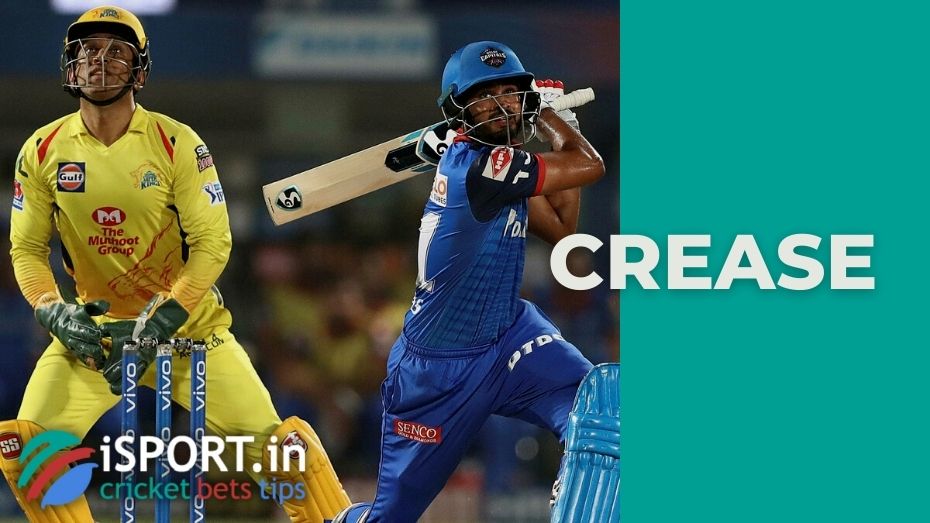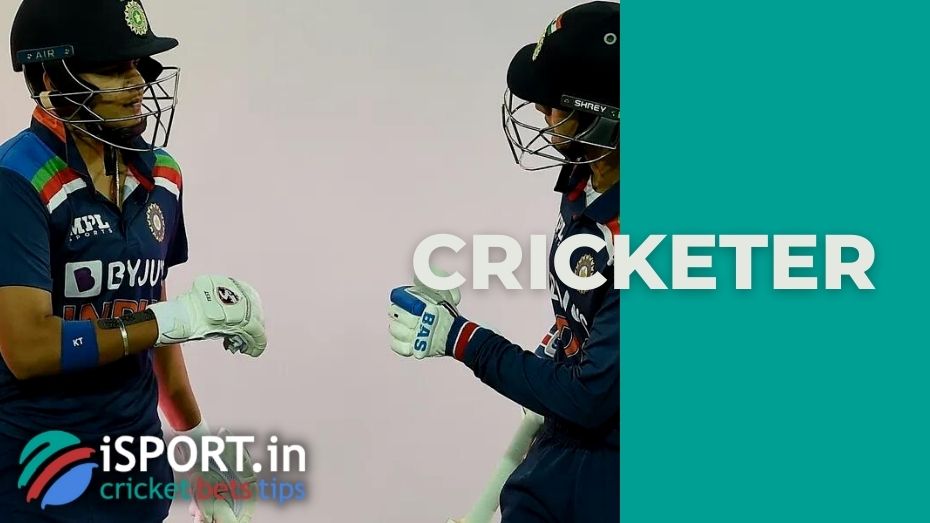Crease and cricketer

creasePrepared material about the main cricket player – cricketer and important lines on the pitch – creases. Read who any cricket player can be and what the drawn lines on both sides of the pitch represent.
Crease
Crease in cricket is a special line drawn according to certain rules. Creases define the area where batsmen or bowlers play. There are 3 types of lines in total (two return creases, bowling crease and popping crease). Let’s take a look at each of them.
First, we find out where they are located. The crises are drawn in the main place of cricket matches – the pitch. It is a rectangular piece of land 22 yards (20.12 m) long. The pitch is 10 feet (3.05 m) wide. This is where the main events of any cricket game (serving and hitting balls) take place.
So, creases are marked on the 2 sides of the pitch (parallel to each other). This line has received the name popping crease for a long time. However, earlier, due to the nature of the fields, it was called the popping hole. The popping crease is perpendicular to the pitch. This crease is believed to be of unlimited length, but the minimum distance at which this line is drawn is 12 feet (3.66 m). On each side of the pitch, this is a minimum of 6 yards (1.83 m), that is, always in half. Why the popping crease is drawn:
- We wrote that all creases are drawn from both sides of the pitch. Popping crease means that the bowler must not cross the entire line when serving the ball for the serving team. Only part of the foot can be behind the line. Sometimes, video replays are used in cricket to resolve the moment with the spades;
- Also, the serve is not valid if the ball bounces two or more times from the pitch before crossing the popping crease from the opposite side;
- This line also limits the number of skaters who serve on the sides. Only one player of the serving team may stand on the side behind this line;
- For batsmen this line is important when scoring runs. When serving, the batsman can cross or even be behind the popping crease. However, if behind the line (from the side of the wicket) there is no part of the bat or part of the body of the batsman, then he risks being stumped. According to the Law, the gate is considered unprotected at this moment.
Bowling crease – this line is parallel to the popping crease. Most likely, bowling creases are drawn first since the pitch zone of 22 yards (20.12 m) is counted from them. The crease is located 4 feet (1.22 m) from the popping crease, and it is 8 feet 8 inches (2.64 m) long. It contains an important element of the game – a wicket consisting of 3 stumps.
Return creases – these are two perpendicular lines relative to the previous 2. These creases connect bowling crease and popping crease. They are drawn parallel to each other at a distance of 8 feet 8 inches (that is, along the endpoints of the bowling crease). The beginning of the line comes from the popping crease. Return creases are not limited in length, but there is still a minimum length of 8 feet (2.44 m). These lines are drawn mainly for the bowler who must serve within the return creases. This restriction prevents the bowler from serving diagonally.
In general, the origin of creases is completely unknown, but we can definitely say that they appeared at the beginning of the 18th century. The first creases were not drawn in any way, but simply scratched out or indicated by foreign objects. It is believed that the English player Alfred Shaw in the 1870s was the first to suggest whitewashing these lines.
More details about creases are spelled out in the official 2017 Laws of Cricket source.

Cricketer
Cricket is considered one of the most popular game sports in the world. It is played by hundreds of millions of people around the planet. Two teams of 11 people play professional cricket. A player who participates in a cricket competition is called a cricketer.
Cricketer can defend his club in any way, for example:
- If his team serves, he can be a fielder. His duties include being in a certain position and trying to catch the ball as quickly as possible. It depends on each fielder how many runs the batting team will earn;
- At the same time, the cricketer can be a bowler. This is the player who serves the batsman;
- The wicket-keeper is also considered a fielder. This is the only member of the serving team allowed to wear gloves and a safety helmet. He is behind the batsman’s back and, when he fails to hit the ball, he tries to catch it faster than anyone else;
- If the team bounces, then the cricketer can become a batsman. This is the player who hits the bowler’s bowls. A lot depends on this player. With good hits, the batting team has a chance to score a large number of wounds;
- In addition to all of the above, the cricketer can also be the team captain. He is an important member of the team in any team game. You can read the captain’s rights and obligations on other pages of our website.
Also, you will find explanations for other significant terms in cricket on our site.
